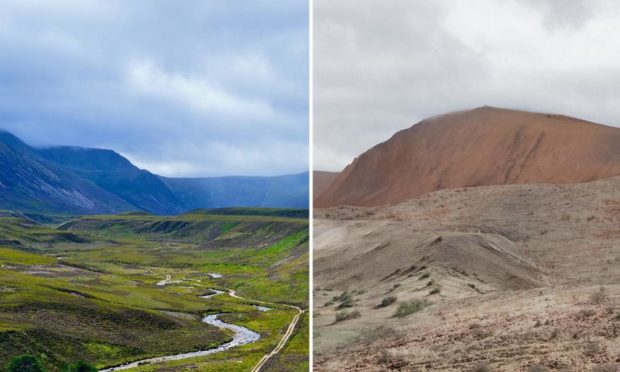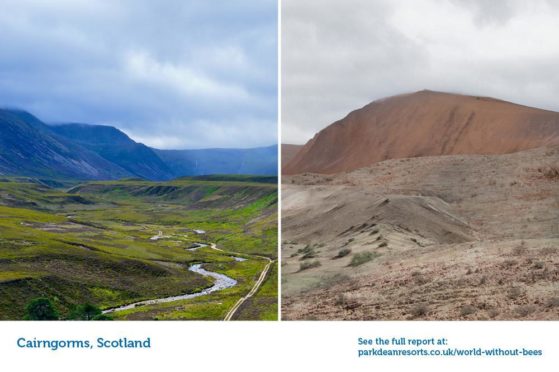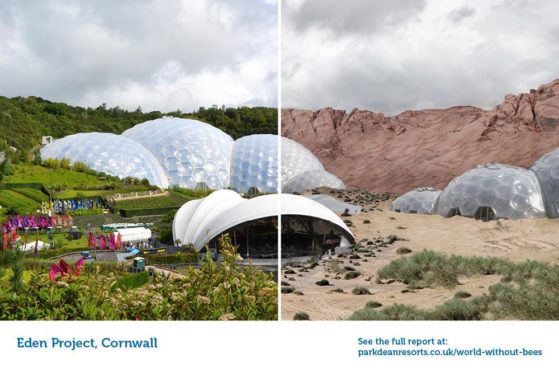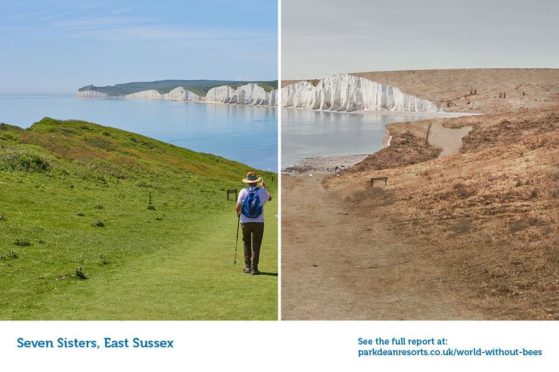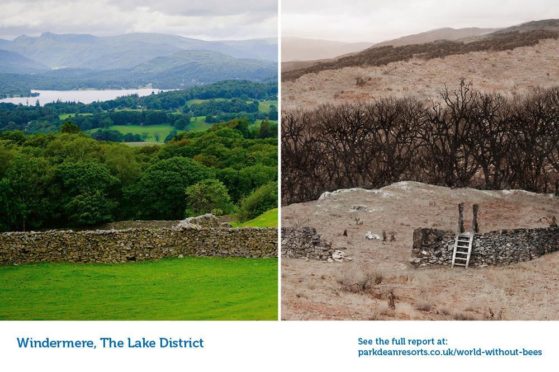This shocking image shows what the Cairngorms National Park would look like in a world with no bees.
Parkdean Resorts have created startling images of what some of the UK’s top beauty spots would look like if the striped insects weren’t around.
Among them is the Cairngorms National Park in the Highlands.
Cairngorms National Park in a world without bees
This shocking image of what the Cairngorms would look like without bees highlights their importance in maintaining a healthy balance balance.
Cairngorms National Park is home to a host of diverse plant and animal species, including endangered insects like pine hoverflies and exotic plants that wouldn’t usually be found in the area.
Bees pollinate the lush vegetation that the area is known for, so without them the landscape looks a lot more bleak.
Other UK beauty spots in a world without bees
Cairngorm national park isn’t the only area in the UK that relies on bees to keep it looking lush and its many animal and plant species happy.
Parkdean Resorts also illustrated what the Eden Project, Seven Sisters and the Lake District would look like in a world without bees.
Bees are a vital part of the ecosystem, but their numbers are in decline. Between 1980 and 2013, 11 species of bee and hoverfly were lost in the UK.
Bees play a big part in the production of everyday supermarket items such as potatoes and almonds.
Protecting the bees
New species of bees are still being discovered in the Scottish Highlands, so conservation efforts to protect them are more important than ever.
Parkdean Resorts have created a guide on how to protect bees in the wild to help preserve the beauty of our natural landscapes.
⚠️Timeline break ⚠️
Take a moment and enjoy a slice of nature this #WorldBeeDay 🐝 pic.twitter.com/DMFDKbzHrs
— RSPB (@Natures_Voice) May 20, 2021
Nicky O’Malley, head of corporate partnerships at the RSPB, said: “Many of our bee species are declining globally. We can really help them by providing nectar-rich plants for them. Plants like crocus and hellebores provide a great source of food for those bees who emerge early in the colder months, while plants like borage and rosemary provide bees with food throughout the summer.
By making our gardens, balconies and window sills into bee-friendly spots, as well as beautiful places for us, we can really help these important pollinators.”
Many organisations used World Bee Day yesterday to highlight the importance of protecting bees and the habitats they live in.
Transforming the Cairngorms
Dan Harris, planning manager with the Cairngorms National Park Authority, transformed beauty spots in the Cairngorms in his own way recently.
He used real-world data from Ordnance Survey, as well as Forest and Land Scotland, to build the 1,748 square mile national park inside the Minecraft computer game.
It took Mr Harris, 38, around three months of work in his spare time to remake the park in blocky form – without any man-made structures like buildings or roads.
To see how he took to Minecraft to recreate the area’s natural beauty, click here.
